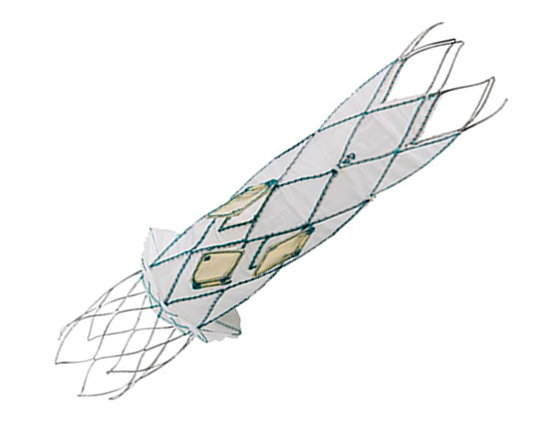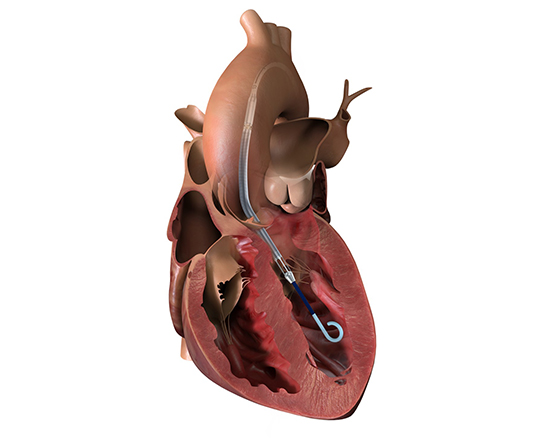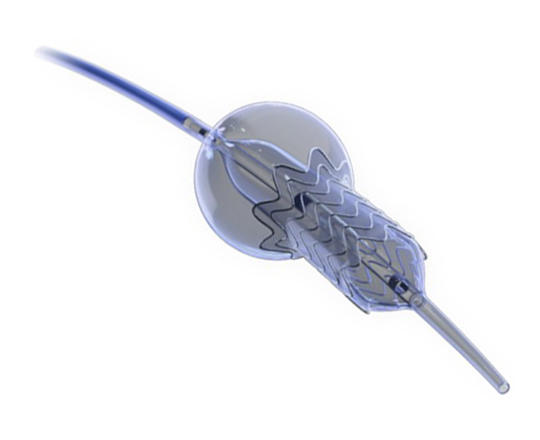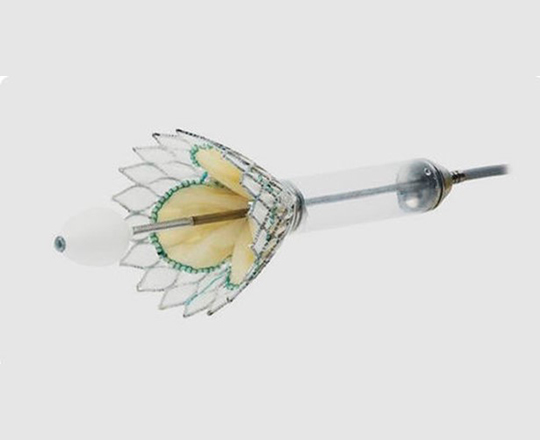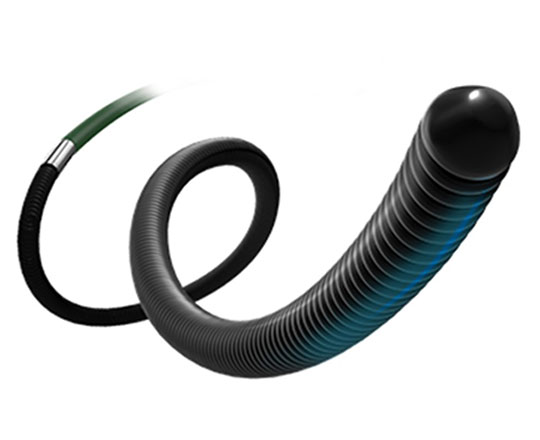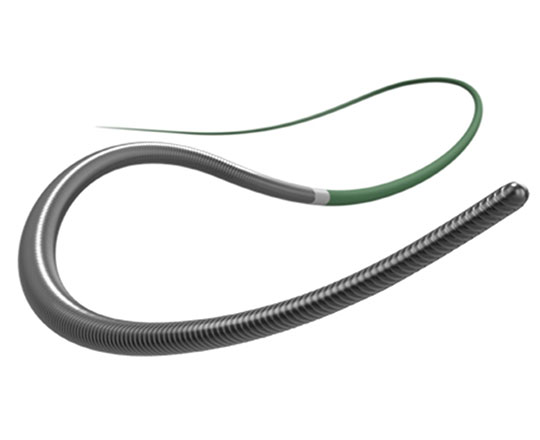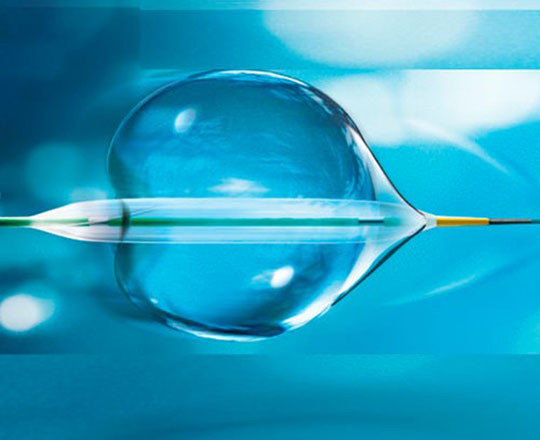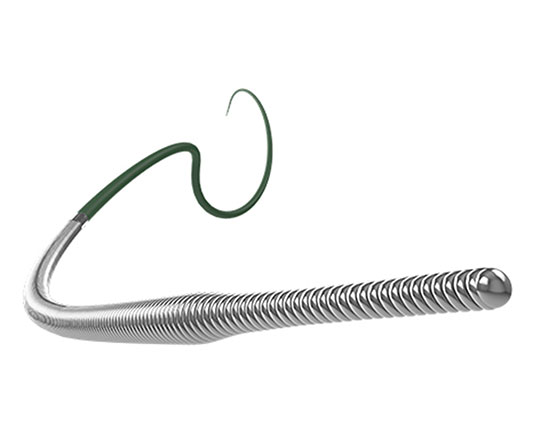Innovation in interventional cardiology
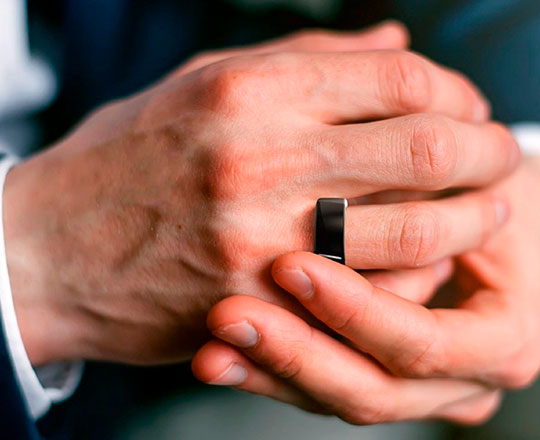
In 2021, this new Korean-made device has won the prestigious Red Dot Award, given to the best device for design and business projection.
The use of new technologies incorporating artificial intelligence algorithms is increasingly common in medical diagnostics.
Atrial fibrillation is the most common sustained arrhythmia, with a high incidence in older populations. New onset of atrial fibrillation in patients who have undergone coronary intervention confers a worse prognosis, with higher rates of adverse events and mortality. It is therefore important to detect it early.
This device, called CART-I (SkyLabs, South Korea), provides 24-hour heart-rhythm monitoring with 99.6% accuracy in the detection of atrial fibrillation, using a ring that is worn on the finger. It is made of surgical materials, and emits photoplethysmography signals that measure the heart rate, identify episodes of atrial fibrillation and generate an electrocardiogram in real time. The ring, which has a battery-life of 48 hours, is water resistant and sends the information to a mobile phone application where the recording can be viewed and sent to the patient’s doctor. The ring can store 1500 episodes of 10 seconds’ duration, but can also record 30 seconds of electrocardiogram at any time or perform a continuous analysis of recent hours.
The future of this technology is moving toward the analysis of other types of arrhythmias, continuous blood pressure monitoring, assessment of heart failure parameters, chronic obstructive pulmonary disease, analysis of stress levels, sleep quality, and assessment of obstructive sleep apnea syndrome.
Keywords: Atrial fibrillation, wireless technology.
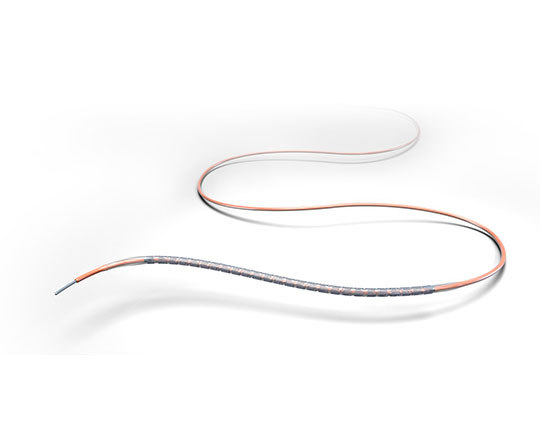
2021 continues with more new launches. In this case, it is the new Xience Skypoint stent (Abbott, USA), which has just been brought to market. This is a drug-eluting stent with improvements that provide excellent navigability, as well as greater post-dilation ranges to allow treatment any type of lesion and vessel.
Xience Skypoint has maintained many of the features of the Xience family. The stent design is of an everolimus-eluting cobalt-chromium multi-link platform; its fluoropolymer coating confers exceptional clinical outcomes in terms of stent thrombosis, and it also maintains the CE mark for 1 month of dual antiplatelet therapy in patients with high bleeding risk, offering the safest stent for all indications.
Xience Skypoint has a wider expansion range than the previous Xience generation, up to 5.75 mm diameter even with a length of 48 mm. This allows for greater expansion of the stent without longitudinal shortening, which improves precision in its positioning.
Other important changes in the device are the following: a more ergonomic connector port, with the largest stent dimensions, a slimmer catheter with a seamless one-piece shaft and a slimmer profile that guarantees high pushability with minimal force, facilitating its navigability in the treatment of more challenging lesions.
Keywords: Percutaneous coronary intervention, coronary stent.
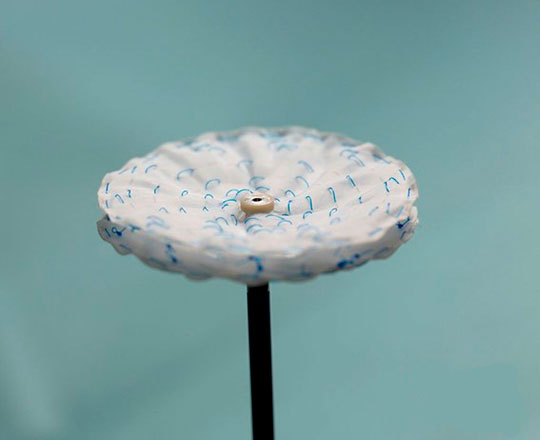
The reSept atrial septal defect occluder (atHeart Medical, Switzerland) is the first occluder to have a bioresorbable structure with no metal components. The frame is made with bioabsorbable filaments that support two polyester patches with radiopaque markers. This frame resorbs over a period of 24 months, while the polyester patches and the radiopaque markers remain at the implantation site.
The device is implanted with a 12-French introducer sheath; currently 3 sizes are available, covering the closure of defects from 4 to 22 mm.
In August 2021, the first 5 patients were treated as part of the ASCENT-ASD clinical trial (NCT04591392) to demonstrate its safety and efficacy in the treatment of ostium secundum-type atrial septal defects compared with the clinical standards of other occluders.
The device is designed as a restorative therapy and is very promising, as it does not leave any metallic structures that could cause future problems.
Keywords: Atrial septal defects, bioresorbable ASD occluder.
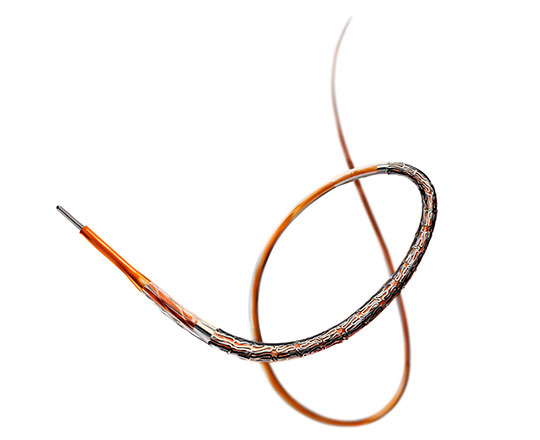
With the aim of promoting the fastest and most physiological vascular repair possible, the Evermine stent (Meril Life Sciences, India) has been brought to market, described as an ultrafine stent, measuring 50 micrometers. It is surprising to see how the engineers’ design to obtain the best hemodynamics can be translated to industrial production; I think that we are close to the limits of technological evolution in the field of coronary stents.
The Evermine stent, manufactured from an L605 cobalt-chromium alloy, has a variable strut width as well as a variable crown design to ensure an in vitro radial strength of 1.1 bar. Its coating contains two types of polymers, PLLA and PLGA, which release everolimus at a dose of 1.25 micrograms/mm2. The total thickness of the coating is 2 microns.
This stent can also be considered a hybrid stent, as it has an open-cell design in its middle area, which facilitates access to the lateral branches, and closed cells at the ends to maintain adequate scaffolding and improve its adaptability to the curves of the arteries.
Some very promising preliminary results are already available, from more than 500 patients in 3 studies with follow-up of 1 year: the Evermine 50 EES-1 Study, Evermine 50 EES-KLES Study and Evermine 50 EES-BGM Study.1 It has shown a thrombosis rate of 0% at 6 months and 1 year and a major adverse cardiovascular events (MACE) rate of 2%. These data are consistent with the benefit of a faster endothelialization, with less inflammation and vascular damage, and, from a mechanical point of view, greater ease of implantation, as the device has high flexibility and good transmission of applied force. It comes in a wide selection of sizes, from 2 to 4.5 mm diameter and 8 to 48 mm length.
REFERENCES
1. Sedaghat A, Sinning JM, Werner N et al. In vitro hydrodynamic and acute clinical performance of a novel self-expanding transcatheter heart valve in various surgical bioprostheses. EuroIntervention. 2018;13:2014-2017.
Keywords: Percutaneous coronary intervention, coronary stent.
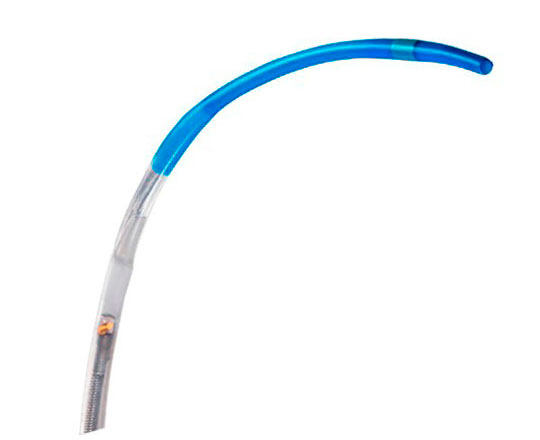
The Dragonfly Opstar catheter (Abbott, USA) is the new generation of catheter for use in coronary imaging with optical coherence tomography (OCT) that brings with it great technological innovation.
The new design of the Dragonfly Opstar catheter combines technological improvements in the tip profile and lens that help easily navigate tortuous anatomy and access distal lesions. This ensures brighter, better quality images to facilitate decision-making.
From a design perspective, the guide wire crossing profile has been reduced by 26% from the previous model and the guide wire port has been reinforced. With these features, the catheter resists 47% more proximal force without torsioning, providing navigability in tortuous anatomies that allows the area of interest to be reached.
There are also technological improvements in the lens, which provides better quality images that are 44% brighter. This makes it easier to detect the external elastic lamina (EEL), enhancing vessel morphology analysis in the vessel to be treated.
Another important point is that the new design of the lens provides better distal visibility, as the lens is positioned 4 mm closer to the tip. This provides an improved focus with the focal point optimized for greater detail in the area of interest.
This new OCT catheter is now available for OPTIS integrated systems, OPTIS mobile systems, ILUMIEN OPTIS systems, and ILUMIEN PCI optimization systems.
Keywords: Optical coherence tomography, coronary artery disease, percutaneous coronary intervention.
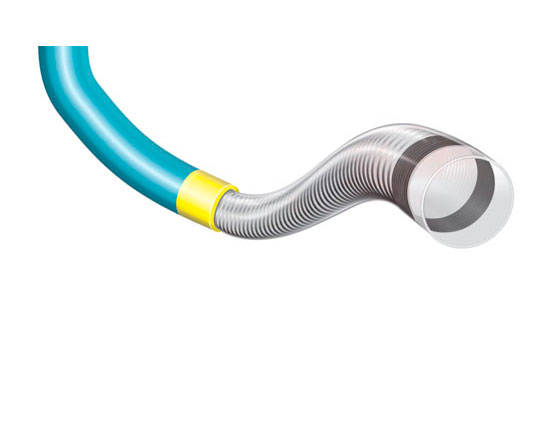
The basic characteristics of a guide catheter extension are navigability, pushability, and the smoothness with which devices can be passed through it.
One of the more interesting innovations in the catalogue of guide catheter extensions is that of the LiquID device (Seigla Medical, USA). Most 6-French extensions have an inner diameter of 0.056’’, while this catheter has an effective inner diameter of 0.061’’. Other available 7-Frech extensions have an inner diameter of 0.062’’ while that of the 7-French LiquID is 0.071’’. These measurements give an idea of the advantages when it comes to working with finer catheters that allow release of large-diameter stents. This can only be achieved with a reduction in the catheter wall thickness, which does not lose its properties thanks to the redesign of the transition zone between the pushing rod and the catheter itself, where the transition is protected by a polymer.
The hydrophilic-coated catheter is 15 cm long, unlike the usual 25 cm, improving navigability in tortuous areas. An interesting feature is that the whole catheter is radiopaque, so the tip does not need any added radiopaque markers.
The catheter is made of a very dense coil that has more volume per millimeter of length, conferring greater resistance to torsion, greater flexibility, and higher radial force. In addition, it has a rounded, atraumatic tip, which guarantees its adaptation to coronary lesions avoids iatrogenic coronary dissection.
Keywords: Guide catheter extension.
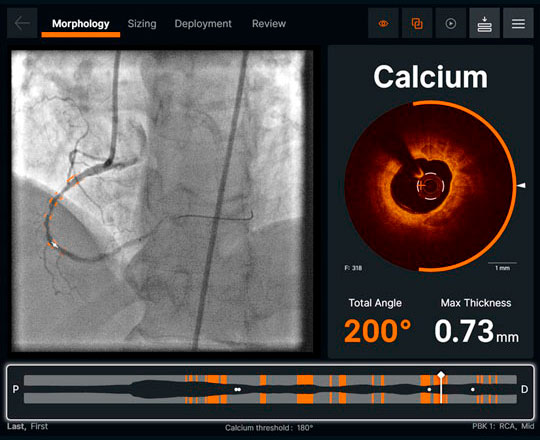
A revolution is coming in the field of image-guided percutaneous coronary intervention, and I think it will mark a new way of working. The use of artificial intelligence models that have been invading all aspects of life in recent years has also reached optical coherence tomography (OCT) consoles via the new software Ultreon 1.0 (Abbott, USA), which has just received the CE mark in Europe in April of this year.
The new Utreon 1.0 software combines OCT with the power of automation driven by artificial intelligence. This improves visualization and allows automation of many measurements that, when done manually, are very time-consuming, to provide precise information and simplify treatment decision-making.
The Ultreon 1.0 software can automatically detect the amount of calcium in the coronary artery and measure the diameter of the vessel to be treated using automatic detection of the external elastic lamina (EEL). This helps improve the accuracy of decision-making during the process of coronary stent implantation in percutaneous coronary intervention.
It also offers an intuitive, simplified workflow that reduces the learning curve and facilitates image interpretation, reducing interobserver variability and increasing diagnostic accuracy and treatment application.
This is the first software of its class to use artificial intelligence and is a great example of technology designed to optimize decision-making, as it reduces uncertainty during the intervention and has a greater accuracy, improving results and patient care.
Keywords: Optical coherence tomography, software, artificial intelligence, percutaneous coronary intervention.
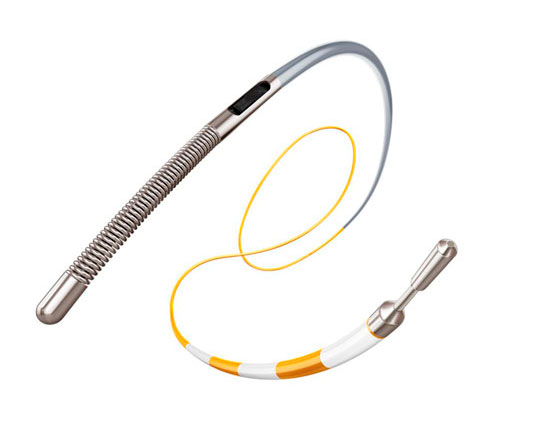
The OmniWire pressure guide wire (Philips, Netherlands) is the first solid-core pressure guide wire to appear on the market. Normally, pressure guide wires are produced with a hypotube that houses the fibers and leads connected to the intracoronary pressure sensor. This design means the guide wire requires a more delicate handling and is less durable during the procedure.
The OmniWire guide wire has a robust design that is completely new from top to bottom. The composition of its materials is very complex, and a lot has been invested in its industrial design.
From distal to proximal it has 4 sections. The most distal section has a molded band of stainless steel with a rounded platinum-alloy tip. This radiopaque tip is 3 cm long and weighs 0.53 g; it is, therefore, a soft, atraumatic guide wire. The core is made of Nitinol, a very elastic alloy, with high durability and shape memory. Outside, covering the Nitinol core, it has a flexible length polymer coating (which does not include the coil tip). Proximal to these 3 cm, it contains the integrated pressure sensor. The remaining length of the guide wire is integrated in the solid proximal core, made of a cobalt alloy that guarantees torque, pushability, and resistance to torsion.
One of the advantages of this device is the length of its hydrophilic coating, over the distal 39 cm of the guide wire, which ensures navigability in more troublesome areas. The remaining length has a hydrophobic coating (PTFE) from 146 cm up to the most proximal part of the guide wire.
I think it will be a significant improvement in guide wire usage.
Keywords: Pressure guide wire, coronary circulation.


